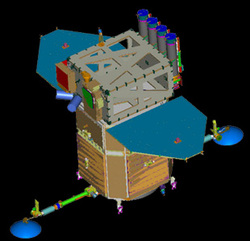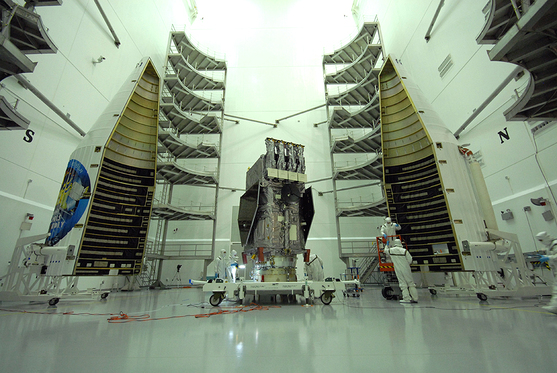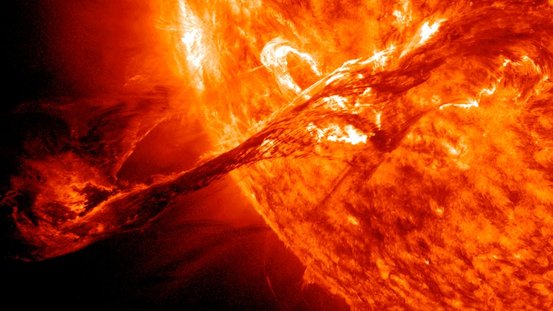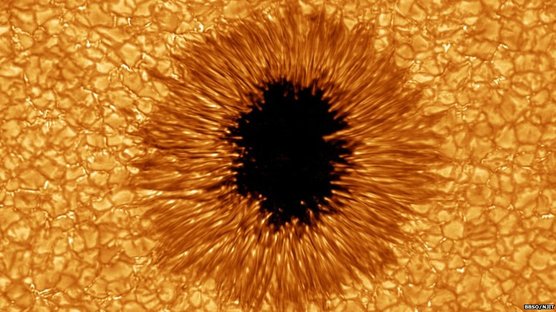
It was launched 11 February 2010 into a circular geosynchronous orbit, inclined at 28 degrees to the equatorial plane. The orbit was chosen to allow (almost) continuous observation of the Sun. It is quite a large spacecraft, being about 4.5 m 'high' and 2 m on each side, and having a launch mass of approximately 3 tonnes. However, about 1400 kg of this is fuel (liquid bi-propellant) giving quite a large delta-V capability of around 1.9 km/s. This is needed for initial orbit acquisition, and then subsequently for orbit control.
The payload instruments have a mass of just 300 kg. Below shows the spacecraft being integrated into the launch vehicle fairing.
During its time on orbit, SDO have produced some truely spectacular images of our star, a couple of which are reproduced below.



 RSS Feed
RSS Feed
